Pregnant Women and Flu Shots, Internet Panel Survey, United States November 2011
Authors: Helen Ding, MD; Gary L. Euler, DrPH; James A. Singleton, MS; Immunization Services Division, NCIRD
Pregnant women influenza (“Flu”) vaccination coverage by month of survey, United States
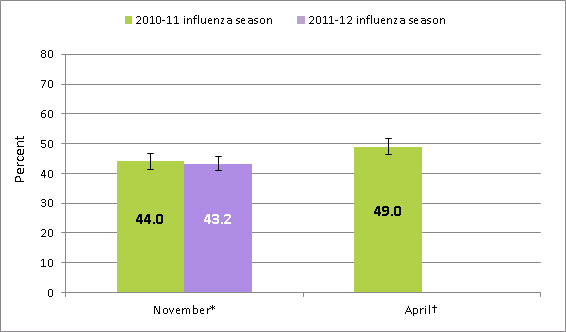
† Vaccinated as of end of season based on women that were pregnant anytime between October- January 2011 for the 2010-11 influenza season (n=1,457)
Introduction
Influenza (“the flu”) can cause a woman to become very sick if she is pregnant (1-3). Infants younger than 6 months are also at high risk of severe illness from influenza, but they are too young to be vaccinated themselves (4).The best way to protect pregnant women from the flu is to get the flu shot every year (5-6). Getting the flu shot while a woman is pregnant has also been shown to prevent influenza and flu-related hospitalizations in their infants up to 6 months of age (6-8). Experts recommend pregnant women to get a flu shot no matter how far along she is in her pregnancy (5,9). Prior to 2009, influenza vaccination levels among pregnant women were generally low (~15%) (5,9). However, vaccination levels increased in response to the 2009 influenza A (H1N1) pandemic to almost 50% during the 2009-10 season (10-11) and the 2010-11 season (12). The national Healthy People 2020 objective for pregnant women influenza vaccination is 80% (5). To estimate influenza vaccination coverage among pregnant women for the 2011-12 season, CDC analyzed data from an internet panel survey conducted in November 2011 among women pregnant any time since August 2011. This report summarizes some of the key findings from this survey.
Key Findings
- By mid-November 2011, influenza vaccination coverage among pregnant women was about the same as vaccination coverage by mid-November 2010- 43.2% vs. 44.0%.
- Results from the November 2010 and April 2011 surveys suggested that an additional 5-17% of pregnant women were vaccinated from mid-November 2010 through mid-April of the 2010-11 season (12,13). If similar proportions are vaccinated after mid-November this year, overall coverage will still remain substantially below the Healthy People 2020 influenza vaccination objectives.
- About 61% of pregnant women reported receiving a provider’s recommendation for influenza vaccination. Among those receiving a recommendation, 68% of pregnant women reported receiving vaccination, more than six times higher than among women who didn’t receive a provider recommendation.
- Medical care providers for pregnant women, especially obstetricians and midwives, are encouraged to continue vaccination efforts through February or March to prevent influenza throughout the season.
Who’s At Risk?
Figure 1. Influenza vaccination coverage among pregnant women by age group, mid-November 2011, United States
- The estimated coverage in 18-24 year olds was similar to the coverage in 25-49 year olds. While for the past season (November 2010 Survey), the coverage in 18-24 year olds was 8.2 percentage points lower compared to 25-49 year olds.
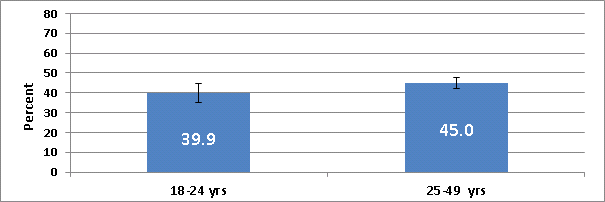
Figure 2. Influenza vaccination coverage among pregnant women by race/ethnicity, mid-November 2011, United States
- The estimated influenza vaccination levels across the four racial/ethnic groups were similar, consistent with the findings in the 2010 November survey.
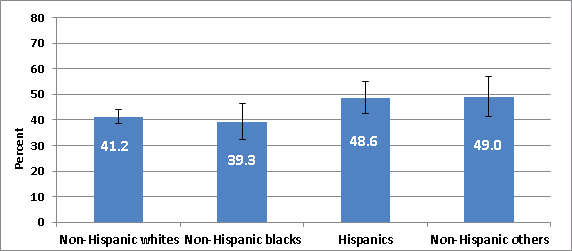
Figure 3. Influenza vaccination coverage among pregnant women by education, mid-November 2011, United States
- Vaccination coverage among those with less than a college degree was lower than the coverage among those with a college or above a college degree, similar to the findings in the November 2010 survey.
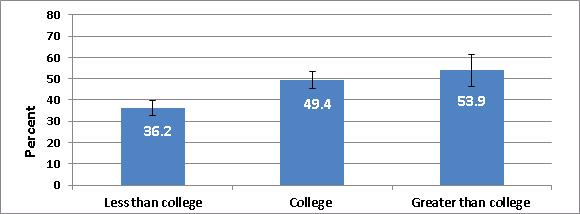
Figure 4. Influenza vaccination coverage among pregnant women by insurance type at interview, mid-November 2011, United States
- Pregnant women who reported having medical insurance at the time of interview had higher vaccination coverage than pregnant women who reported not having insurance. Only 7% of pregnant women reported not having medical insurance. Among pregnant women who reported having medical insurance, those with private/military insurance had higher vaccination coverage than those with public insurance; consistent with the results from the November 2010 survey.
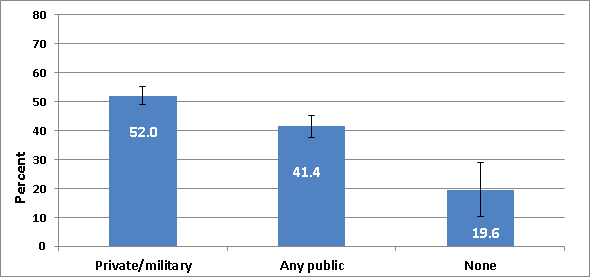
Figure 5. Influenza vaccination coverage among pregnant women by other high-risk conditions*, mid-November 2011, United States
- Women with an additional high-risk condition besides pregnancy that increases the risk of severe influenza had a higher coverage than women with no other high-risk condition, similar to the results from the November 2010 survey.
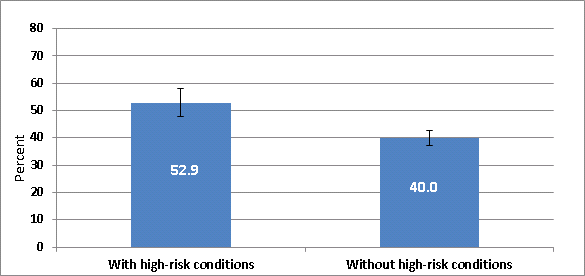
* Conditions associated with increased risk for serious medical complications from influenza, including chronic asthma, a lung condition other than asthma, weakened immune system cases by a chronic illness or by medicines taken for a chronic illness
Figure 6. Influenza vaccination coverage among pregnant women by provider recommendation and offer, mid-November 2011, United States
- Women who reported a provider recommended and offered influenza vaccination were twice as likely to be vaccinated as women who received a recommendation but no offer. Women who reported receiving a recommendation but no offer were about four times as likely to be vaccinated as women who did not receive either a recommendation or an offer. Similar results were found in the November 2010 survey.
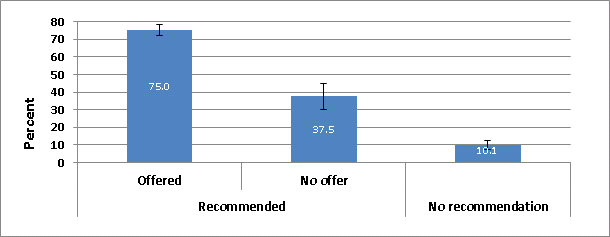
Figure 7. Reported place of receiving flu shot during pregnancy, mid-November 2011, United States
- The most common place reported for receiving their flu vaccination was in the offices of their obstetrician/gynecologist or midwife during pregnancy, similar to the November 2010 survey.
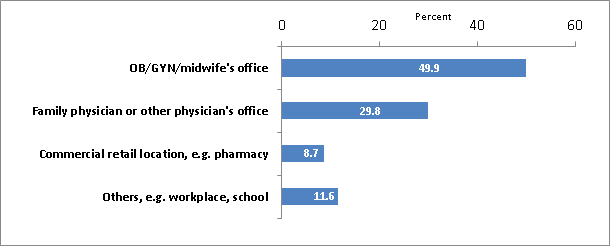
Figure 8. Main reasons reported for not receiving influenza vaccination among unvaccinated pregnant women, mid-November 2011, United States
- Concern about the safety risk to the baby if vaccinated was the most common reason reported by unvaccinated pregnant women for not receiving the influenza vaccination. Other common reasons reported included concern the vaccine would give them the flu, not getting sick from the flu or could treat the flu, not thinking the vaccine is effective in preventing the flu, and concern about safety for themselves if vaccinated.
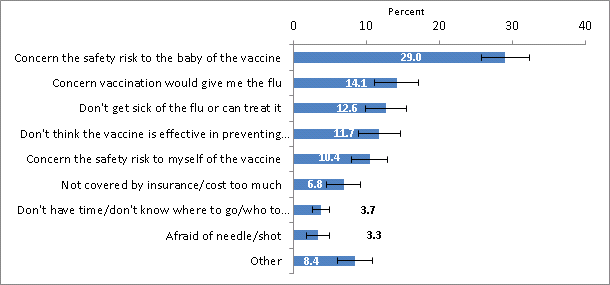
What Can Be Done? (Public Health Implications)
- Medical providers for pregnant women, especially obstetricians and midwives, are encouraged to continue vaccination efforts to prevent influenza throughout the influenza season.
- Influenza vaccinations for pregnant women should continue to be offered in many locations including the offices of an obstetrician or midwife, family physician, or other doctor; clinics, health departments, pharmacies and college health centers; as well as work sites and other settings.
- The November internet panel survey of pregnant women is designed to provide rapid estimates of national influenza vaccination coverage and to assess effectiveness of current vaccination efforts.
- The follow-up survey in April 2012 will assess the impact of providing mid-season influenza vaccination coverage and related results.
Data Source and Methods
CDC conducted an internet panel survey during November 1-14, 2011, to provide mid-season estimates of influenza vaccination coverage and information on knowledge, attitudes, and behaviors related to influenza vaccination among pregnant women. Women 18–49 years who were pregnant at any time since August 1, 2011, were recruited from the SurveySpot panel operated by Survey Sampling Internationalexternal icon which was the same as the November survey conducted during the 2010-11 influenza season. Of all panel members contacted during November 1-14, 2011, 2,266 were eligible for the survey, and 2,047 (90.3%) completed the online survey. The sample was weighted to reflect the age and race/ethnicity distribution based on census region estimates from the U.S. population of pregnant women (13).
Survey respondents were asked if they had an influenza vaccination since August 1, 2011, and if yes, in which month and whether it was before, during, or after pregnancy. Pregnancy status questions included whether respondents were currently pregnant or pregnant at any time since August 1, 2011, and if so, what were the actual months of pregnancy. Respondents were asked their beginning and end (or expected delivery) date of the pregnancy. All respondents were asked if their doctor or other health professional had recommended or offered them influenza vaccination during an office visit and their attitudes towards and beliefs about influenza and influenza vaccination. Weighted analyses were conducted using statistical software. Confidence intervals were calculated, and chi-square tests were used to assess statistical significance of differences in vaccination coverage levels between subgroups.
Limitations
These results are preliminary and should be interpreted with caution. The follow-up internet panel survey in April 2012 will allow for assessment of influenza vaccination coverage at the end of the influenza season. State specific estimates of influenza vaccination coverage for the 2010-11 season will be provided later from the Pregnancy Risk Assessment Monitoring System (PRAMS) (11), and national estimates from the Behavioral Risk Factor Surveillance System (BRFSS) will also be available later for comparison to the internet panel survey estimates.
The findings in the report are subject to several limitations. First, the sample is not necessarily representative of all pregnant women in the United States, because the survey was conducted among a volunteer panel rather than a randomly-selected sample. Second, all results are based on self-report and pregnancy and vaccination status were not validated by medical record review; therefore all responses are subject to recall and reporting error. Finally, selection bias might remain after weighting adjustments, given the exclusion of women with no internet access and the self-selection processes for entry into the panel and participation in the survey. Despite these limitations, internet panel surveys are a useful surveillance tool for timely midseason and postseason evaluation of influenza vaccination coverage and knowledge, attitude, practice, and barrier data.
Related Links
- text4babyexternal icon (Social Media)
- 2010-2011 Mid-Season Online Report pdf icon[428 KB, 6 pages]
- Influenza Vaccination Coverage Among Pregnant Women—United States, 2010-11 Influenza Season
- Flu vaccination accepted by pregnant women not linked with miscarriageexternal icon
- Influenza vaccination coverage among pregnant women for 2009-10 influenza seasonexternal icon
- Influenza Vaccination Distribution and Coverage, United States, 2010-11 and 2011-12 Seasons pdf icon[1.4 MB, 30 pages]
- SSI – Survey Sampling Internationalexternal icon (Survey Home Page)
- Survey Spotexternal icon (Survey Panel)
References/Resources
- Dodd L, MCNeil SA, Fell DB, et al. Impact of influenza exposure on rates of hospital admission and physician visits because of respiratory illness among pregnant women. CMAJ 2007;176(4):463-468.
- Neuzil KM, Reed GW, Mitchel EF, et al. Impact of influenza on acute cardiopulmonary hospitalization in pregnant women. Am J. Epidemiol. 1998;148(11):1094-1102.
- Jamieson D, Theiler R, Rasmussen S. Emerging infections and pregnancy. Emerging Infectious Disease. 2006;12:1638-1643.
- Poehling KA, Edwards KM, Weinberg GA, et al. The Underrecognized Burden of Influenza in Young Children. NEJM 2006;355:31-40.
- CDC. Prevention and control of influenza with vaccines: recommendations of the Advisory Committee on Immunization Practices (ACIP), 2010. MMWR 2010;59(No. RR-8).
- Eick AA, Uyeki TM, Klimov A, et al. Maternal influenza vaccination and effect on influenza virus infection in young infants. Arch Pediatr Adolesc Med 2011;165:104–11.
- Poehling KA, Szilagyi PG, Staat MA, et al., Impact of maternal immunization on influenza hospitalizations in infants. Am J Obstet Gynecol 2011;204(6 Suppl 1):S141–8.
- Zaman K, Roy E, Arifeen SE, et al. Effectiveness of maternal influenza immunization in mothers and infants. N Engl J Med 2008;359:1555–64.
- American College of Obstetricians and Gynecologists Committee on Obstetric Practice. Influenza vaccination and treatment during pregnancy. Obstet Gynecol 2004;104(5 pt 1):1125–6.
- Ding H, Santibanez TA, Jamieson DJ, et al. Influenza vaccination coverage among pregnant women—National 2009 H1N1 Flu Survey (NHFS). Am J Obstet Gynecol 2011;204(6 Suppl 1):S96–106.
- CDC. Seasonal influenza and 2009 H1N1 influenza vaccination coverage among pregnant women—10 states, 2009–10 influenza season. MMWR 2010;59:1541–5
- Influenza vaccination estimates from a national internet panel survey of pregnant women, United States, November 2010 pdf icon[428 KB, 6 pages]
- CDC. Influenza vaccination coverage among pregnant women — United States, 2010-11 influenza season. MMWR 2011; 60:1078-1082
- Centers for Disease Control and Prevention, National Center for Health Statistics. Estimated Pregnancy Rates for the United States, 1990-2005: An Update. National Vital Statistics Reports, Volume 58, Number 4.
